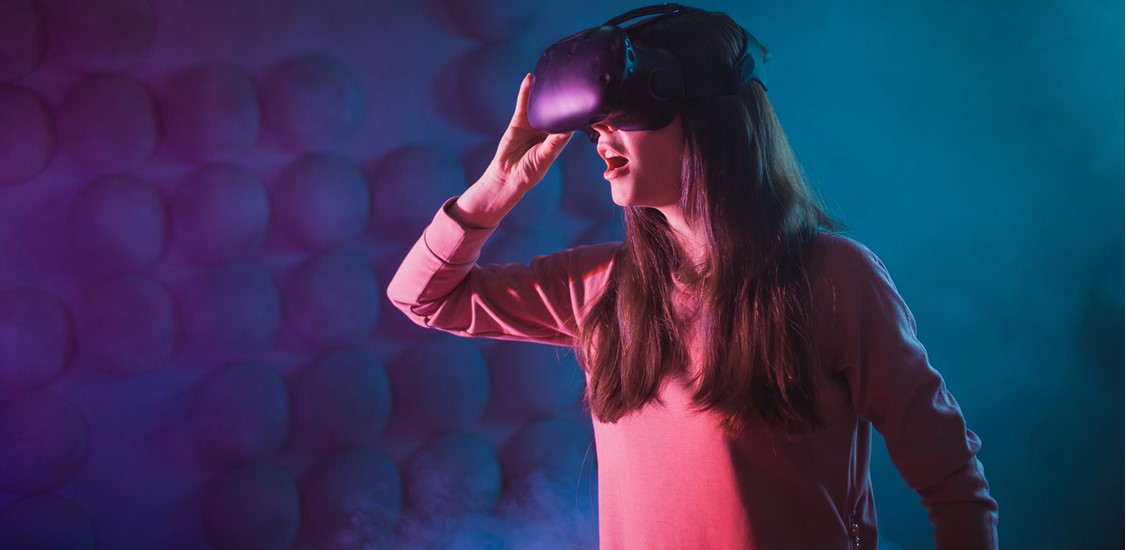What’s in store for online store owners?
It isn’t surprising that E-commerce is evolving at a pace faster than every other retail channel. Shopify's latest reports claim 78% of all e-Commerce traffic and 66% of all orders are made on mobile devices and not desktop computers. What’s even more startling is the fact that E-commerce numbers haven’t shown any sign of slowing down post the pandemic as well. According to a Statista report, e-commerce revenues could breach the $7.4 trillion mark by 2025. As it stands, 18% of all sales made globally are done online. By 2040, the share of online trade could grow to a whopping 92%. When it comes to retail, the future is most certainly online and significant transformation is on the horizon and what could be next?
Extended reality (XR), which was earlier considered a thing of the future is making rapid inroads in the e-Commerce industry. A report by Snapchat and Deloitte Digital that surveyed over 15,000 customers in key markets worldwide, claim there are more than 100 million consumers shopping with AR online and in stores. The next generation of native digital shoppers are looking for a completely disruptive and immersive shopping experience. Inevitably, XR Technologies including Augmented Reality (AR) and Virtual Reality (VR) would redefine ‘shopping’ and transform how we buy and sell online.
How AR and VR can transform e-commerce
With online shopping going through the roof during the pandemic, a period that forced people to shop online, even for products that they might have otherwise sourced from a brick and mortar store. Consumer expectations from e-Commerce stores have skyrocketed and shoppers seek an e-Commerce experience that combines the ease of browsing infinite options with the touch and fee, and purchase confidence of shopping in-store. In retail sectors like automobiles, fashion, furniture, and when selling any products that shoppers want to interact with and ‘try’ before, this holds a lot of relevance.
Bridging the gap between e-commerce and in-store shopping is AR/VR, offering a real-world shopping experience, right from the comfort of their mobile phones and VR headsets. While VR requires headsets and specialized equipment and is currently more accessible through in-store experiences, AR applications support e-Commerce on any smartphone, anywhere in the world.
Acquiring new customers
Brands that are leveraging AR/VR in their marketing campaigns are automatically perceived as trendsetting and advanced. A brand looking to improve its brand retention and recall should embrace AR/VR in their engagement game. AR/VR content that is engaging and entertaining can also be an effective customer acquisition tool, to help draw new shoppers to a brand’s profile.
Interaction and engagement
Snapchat, famous for its filters, is a classic example of an AR experience that engages effectively. It isn’t surprising now that makeup at a virtual Sephora counter, or a virtual automobile showroom that lets you experience the interiors and features of various models is gaining popularity. AR/VR experiences encourage customers to interact more, engage and literally ‘play’ with the product in a way that you may not be able to even in a physical environment. Interestingly, early data suggests that the longer the time prospects spend with the product, the more likely they are to make a purchase.
Information search and decision-making
Shoppers often refrain from making a decision online simply because of the lack of in-depth information or insight into what the product is capable of. Long product descriptions, FAQs, and product reviews have been the go-to solution for store owners to mitigate the situation.
With AR/VR, it opens up a plethora of options where sellers can give customers more information about a product than with just text, static images, or even video.
An experience that is close to first hand, lifelike 360-degree views and walk-throughs, features that let you ‘try on’ clothes in a virtual changing room, or applications like the Ikea catalog that enable users to place furniture virtually in their homes have started to revolutionize e-Commerce. AR/VR enhanced information search can reduce the time taken to evaluate options and acts as the trust-boost that shoppers need to make a purchase decision. The eternal e-Commerce problem of ‘The abandoned shopping cart’, could finally be taken on with the possibilities that AR/VR open up.
Customer service and retention
A few years down the line, customer service is likely to benefit from AR/VR and become a prime focus area in the future. Immersive technology that can enhance customer satisfaction at the post-sales stage, could massively improve retention and build loyalty. A virtual demonstration of the right way to use, maintain or troubleshoot a product, letting customers explore enhancements or add-ons, including emergency services, or even join a supportive community of users online, could evolve into the metaverse of the future.
Adopting AR/VR technologies for your e-commerce business
The first step towards adopting AR/VR to enhance your e-Commerce business is to understand how it can transform your customer’s overall experience while getting insight into what exactly they are looking for from your e-Commerce store. Crafting an AR/VR enhanced eCommerce experience around your customer’s needs will ensure that you achieve your business outcomes, delight your shoppers, sell more and build your brand into a powerful one.
From giants like Amazon to small online retailers, none would ignore the game-changing impact of AR/VR technologies on e-Commerce. The fast-growing VR headset market is bringing VR experiences closer to both retailers and consumers across the planet. With AR being already highly accessible through billions of smartphones and tablets across the planet, a whole shift in e-Commerce shopping is inevitable. While initially being an advantage that only large retailers could afford, today, AR content production and applications toolkits can bring the infinite advantages of an extended reality enhanced shopfront to any e-Commerce seller, of any size, anywhere in the world.






















